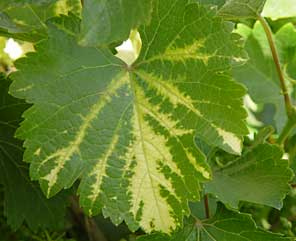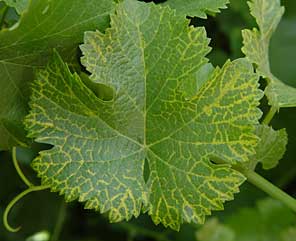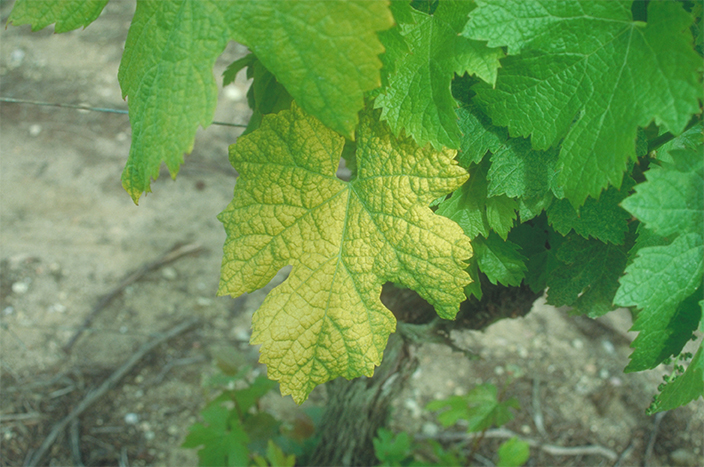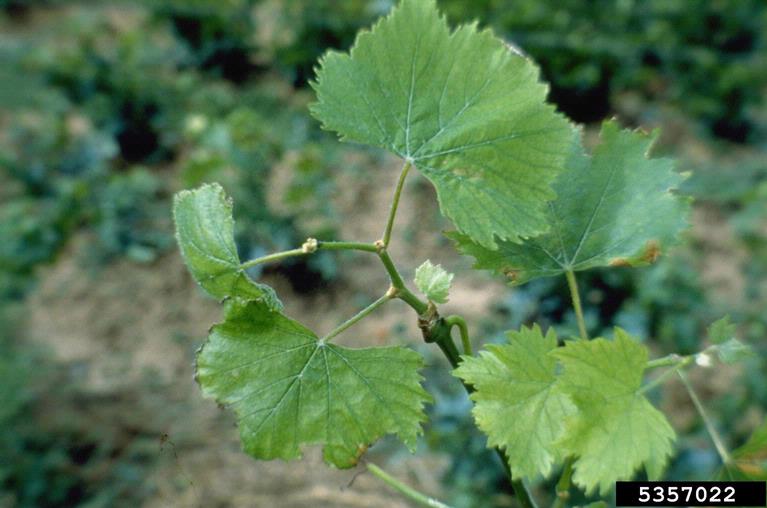Grapevine Fanleaf Virus
 Causal Agent
Causal Agent
Grapevine Fanleaf Virus (GFLV)
Hosts

Symptoms
Grapevine Fanleaf Virus (GFLV) is thought to be the most serious virus disease affecting
grapevines. Fanleaf causes distortion of leaves and may cause unusual 
 Control
Control
Growers should plant certified, disease-free plants. Pruning tools should be disinfected with a bleach solution (1 part household bleach, 9 parts water) between cuts. Infected plants should be removed and discarded. Prior to replanting with susceptible hosts, a soil-test to determine the presence of plant pathogenic nematodes (which may harbor and spread the virus) should be performed.


